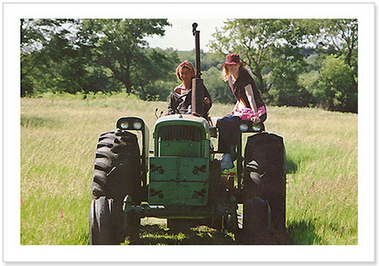I am interested in the 'memory' of land.
What is the imprint of a place? What is sacred about a space?
What is the story or song that wants to be heard?
Our environment is always speaking to us.
What are we willing to hear, remember, and heal?
For over 3,500 years, labyrinths have been created to support people in reconnecting with the divine. Thru various cultures, a singular path evolved from the spiral, the universal symbol of growth and transformation. By journeying through a labyrinth we enter a world that alters our perceptions, expands our intuition, and opens our sense of mystery and magic.
Honoring the Ancestors was the first labyrinth, historically, to be created in in animal form. The glyph honors the early indigenous farmers of the Rock River Valley. The idea for the image reaches back in Northwest Illinois' geographical heritage to the earliest settlers, who left behind artificial mounds in circular, oval, and animal forms during 600-1300 A.D. These symbols are strongly connected to the natural resources of the land. The Turtle effigy mound in Rockford, IL, is the only one intact in the state on public lands.
Honoring the Ancestors (20 acres) - 06/21/01
Songlines are stories encoded in the landscape. They are paths the ancestral spirits followed in the original journeys across the land. A songline consists of many small songs recounting one long Creation myth. It is believed the Dreamtime Ancestors brought into being all forms of life. It is a priviledge to honor all the Ancestors thru song and music, and walking the land. These songs renew the land by celebrating the spiritual bond which continues to exist between the ancestral beings and all created life.
I am inspired by the potential of site-specific work to create sacred paths and "songlines" to activate the human body and the Earth body.
Monkey Big Dipper (10 acres) - 06/21/04
The Dancing Spider Wheel reflects the inter-relatedness of all beings on earth. Through the ancient universal medicine of the spider we can weave a future honoring our relationship to the land, respecting our resources, and creating new wheels of life. Finished on the spring solstice of 2003, it was used for a medicine wheel ceremony using the four wheels of the spider. The design was inspired by a water spider carved in an artifact discovered at the Cahokia archaelogical site.
Dancing Spider Wheel (15 acres) - 06/21/03
Hummm was created in 2007 as a prayer to the restoration of the natural harmonies of our earth. All living forms have a unique sound that they contribute to the full symphony of the planet. Although the loss of single notes seem almost imperceptible, those notes reflect the loss to the overall integrity of our ecosystems.
Hummm (15 acres) - 06/21/07
In creating a large scale honeycomb, my intent is to reawaken an integrated relationship with the ecology, geometry, and community of one of our most ancient species. There is inspiration that arises in being able to see the exceptional details in the world immediately around us. And from those details, recognizing the macrocosm contained within a single living cell.
YES, this is how these pieces are created. Vintage John Deere.
Trying to figure out where we are in the design.
Bees have long been symbols for accomplishing the impossible. For a long time scientists were unable to determine how bees were able to fly. Aerodynamically, the body was too large for the wings. It has only been in more recent times that science has determined that bees move their wings at such a high rate of speed that it makes flight possible.
Sometimes a note needs to be played louder before we can notice its absence, and sometimes we need to be still to be perceptive enough to receive the wisdom from the humblest in earth’s species.
Bees are the capstone of our ecologies, pollinating plants we need to sustain our lives. Not only providing nourishing products like honey, beeswax, propolis, and royal jelly, bees also prey on other insects, keeping the insect population in balance. Currently we are witnessing an unprecedented challenge to the wellbeeing of the bee population of the planet.









